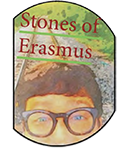$9.50
Homer’s Iliad | Greek Epic & Mythology Unit MS & High School 8-12 ELA
Teaching Homer’s Iliad—Its story is set within the larger narrative of the Trojan War. Two men—Agamemnon and Achilles—are driven by anger and ambition and foment animosity, which catalyzes the war’s final moments. Their actions not only herald Troy’s downfall but also signal the tragic collapse of powerful men consumed by war’s violent madness. The resources, herein, are meant to greatly enhance the teaching of the epic in a middle or high school English Language Arts or Humanities classroom.
This all-in-one guide includes a teaching manual for Homer’s Iliad, key character profiles, a map, background information, reading cards, and exciting connections to art and literature. The ‘Further Reading Guide’ enriches your exploration with links to books and websites that will satisfy your curiosity about the Homeric epic. This resource is crafted with love and care for educational use in a classroom setting, so dive in and let your imagination soar!
This Resource Includes the Following Features:
- Available as a PDF and Google Workspace (Google Slides)
- 1 Teacher’s Manual (stuffed with practical tips and suggestions)
- 1 Key Characters Anchor Chart
- Orient your learners by identifying the key characters behind Homer’s epic retelling of the Trojan War’s most tragic characters, Achilles and Agamemnon
- 1 Map with Natural Geography of Homer’s Epic
- 26 Illustrated Reading Cards:
- Homeric Tradition (1-4)
- In Medias Res (5-6)
- Agamemnon & Sarpedon (7-10)
- Hector (11)
- Achilles (12-16)
- Chryseis & Patroclus (17)
- Funeral Games for Patroclus (18-20)
- Diomedes, Thersites, Odysseus, Paris, Myrmidons (21-22)
- Ajax, Automedon, Menelaus, Nestor, and Phoenix (23)
- Priam and Hecuba (24)
- Aeneas, Andromache, Antenor, and Astyanax (25)
- Dolon, Glaucus, Pandarus (26)
- 30 Text-dependent Questions
- Includes a Student-Friendly Reading Protocol.
- 22 Illustrations—each includes a rich variety of details, with source material and other important bibliographical information.
- 242-Count Question Bank
- Check for understanding with a quick and adaptable question bank. Includes questions for all 24 books of the Iliad.
- Includes 2 Custom Note-taking templates to ensure student accountability!
- 7 Critical Thinking Questions
- Frayer Model Vocabulary Cards
- Frayer models are a way to get kids to think about vocabulary visually in a four-section square — A square for meaning, one for examples, another for non-examples, and a sketch. It is amazing to see the work they produce. A great way to decorate your classroom to showcase your kids’ vocabulary-in-text understanding. The cards can contain terms, geography, and challenging words (as well as contextual entries that fit the story).
- End-of-Each-Book Exit Ticket
- Have students complete an exit ticket after each book or any natural of the epic. Collect these exit tickets and quickly see what your students have learned.
- 1 Further Reading List
- Don’t disregard this further reading list if you think it is merely a bibliography. Share the list with your students or have them do projects based on the available research. Assign different sources to students and organize presentations where learning can go deeper into the story.
- Answer Keys for all student-facing documents
- Teachers always ask for answer keys for my products, so I gave you plenty of guidance on what to expect from students in their written and oral responses.
- 1 Student Sample of Written Work
- Standards Alignment Chart (Common Core, VA SOL, and TEKS)
I created this resource with high school students in mind. It is designed to teach a full unit on any adaptation of Homer’s epic poem The Iliad —
- Encourage students to talk about mother and son relationships, the effects of war on the human psyche, heroism, fate and destiny, mortality and vulnerability, pride, hubris, in medias res, and more.
- Use this resource as a stand-alone lesson or pair it with a larger unit on the Trojan War, The Odyssey, Robert Graves’s Greek Myths, or Edith Hamilton’s Mythology.
This educational digital download supplements a World Literature unit in middle or high school. The lesson also includes public domain content, original content, and links to full-text primary resources online. No copyrighted work not belonging to Stones of Erasmus is included. © 2025 stonesoferasmus.com
